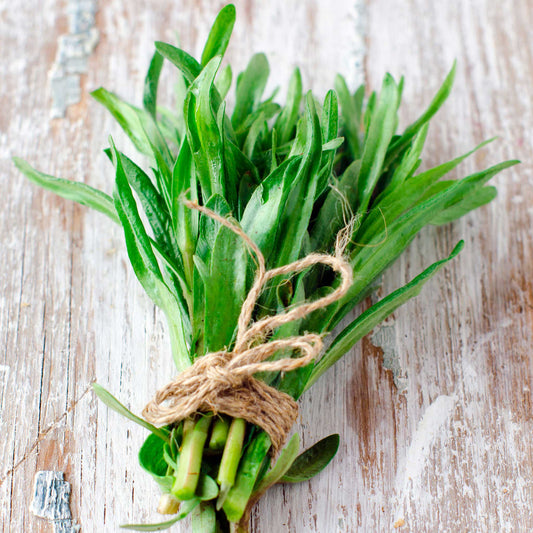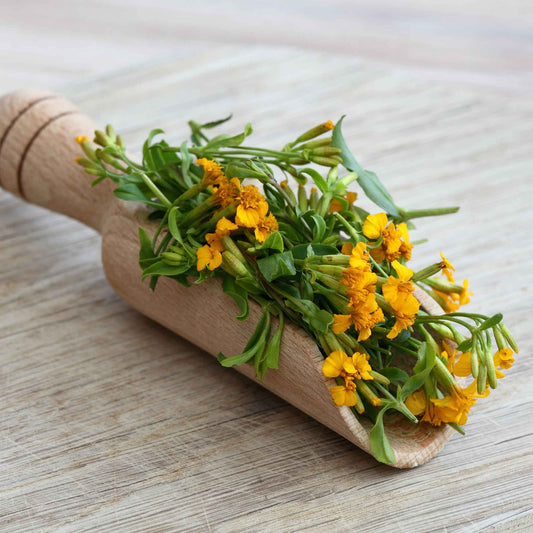-
main-collection-product-grid

Tarragon Seeds
Used raw or cooked in many classic continental dishesTarragon Seeds
Used raw or cooked in many classic continental dishesRegular price As Low As $5.49Regular priceUnit price per -
main-collection-product-grid

Tarragon Seeds - Mexican
Heat loving, late blooming glossy licorice-flavored leavesTarragon Seeds - Mexican
Heat loving, late blooming glossy licorice-flavored leavesRegular price As Low As $5.49Regular priceUnit price per
Growing tarragon seeds in your garden
- A culinary spring perennial
- Aromatic and flavorful
- Thrives in bright, sunny growing areas
- Attracts pollinators while warding off deer
Tarragon is great for cooking and has the added bonus of attracting pollinators
A premier online supplier of tarragon Seeds, Eden Brothers offers two tarragon seed varieties for sale: Russian Tarragon Seeds and Mexican Tarragon Seeds. Both varieties can be used in cooking, and both bloom in late summer and fall, providing food for pollinators well after most other flowers have withered. Prune plants regularly to keep the shrub compact and for kitchen use, and don't allow tarragon to flower early, as it will disrupt harvesting.
When to start tarragon seeds and thin seedlings
Tarragon seeds should be started indoors before the last frost. Sow multiple seeds in each pot or cell of the seedling tray for a better chance of germination, and thin seedlings when they have reached about two inches in height. Transplant outdoors when all danger of frost has passed, or transfer to a larger pot and grow indoors. Tarragon does, however, have an extensive root system, and will need ample room to grow, or regular transplanting into larger pots.
How to harvest tarragon and promote plant growth
Harvesting of tarragon can begin as soon as stems are about six inches in length, and harvested leaves can be dried or frozen for later use. Divide plants every few years for better growth. Although tarragon is drought resistant and rarely needs additional watering, it prefers partial shade and indirect sunlight. Soil should be sandy, with good drainage to avoid overwatering.
In addition to its culinary uses, tarragon can be brewed into a tea commonly used by the French for insomnia, and this unassuming little plant—certainly not much to look at—was historically used to treat scurvy. In France, it is known as "the king of herbs." It tastes a little bit like licorice.
What to plant with tarragon
Low-maintenance and capable of growing well even in nutrient-poor soil, tarragon can be planted with most vegetables and herbs. It does particularly well with other perennial, drought tolerant herbs like rosemary, thyme, and lemon balm. As a bonus, tarragon works well with acidic flavors, and is just as good a companion to lemon balm in the kitchen as it is in the garden. It's also an essential ingredient in dijon mustard, and is commonly used to flavor vinegar as well as in bearnaise sauce.
To learn more about planting, growing, and caring for tarragon seed, see our Tarragon Seeds Planting Guide.

